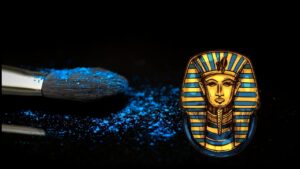Latest News
Goodbye to the Secrets of Ancient Egypt: Scientists Successfully Recreate Egyptian Blue, the First Ever Synthetic Pigment
Scientists have successfully recreated Egyptian Blue, the world’s first synthetic pigment, which was first developed by ancient Egyptians. This breakthrough opens up new possibilities in art, science, and technology, bringing a piece of history back to life.
Scientists Stunned: Hypatia Stone Contains Never-Before-Seen Extraterrestrial Compounds
The Hypatia Stone is a tiny extraterrestrial pebble packed with alien ingredients—pure aluminum, microdiamonds, presolar organic dust, and exotic minerals—possibly born in a supernova. Its composition defies known Solar System materials and opens new frontiers in cosmochemistry. This article explains the discovery, scientific methods used, implications for research and education, and practical steps for labs, teachers, and space missions.
Not Gold, Not Copper—Egyptians Used Iron From Space in Sacred Objects, New Study Reveals
Before iron smelting began, Egyptians shaped iron from meteorites into sacred artifacts. From Tutankhamun’s 3,300-year-old dagger to 5,000-year-old beads at Gerzeh, this meteoritic iron—rich in nickel and cobalt—symbolized divine connection. This article explores the cultural, scientific, and spiritual relevance of “iron from the sky,” offering insights for archaeologists, curators, and craftspeople on the techniques, myths, and preservation of this ancient celestial metal.













